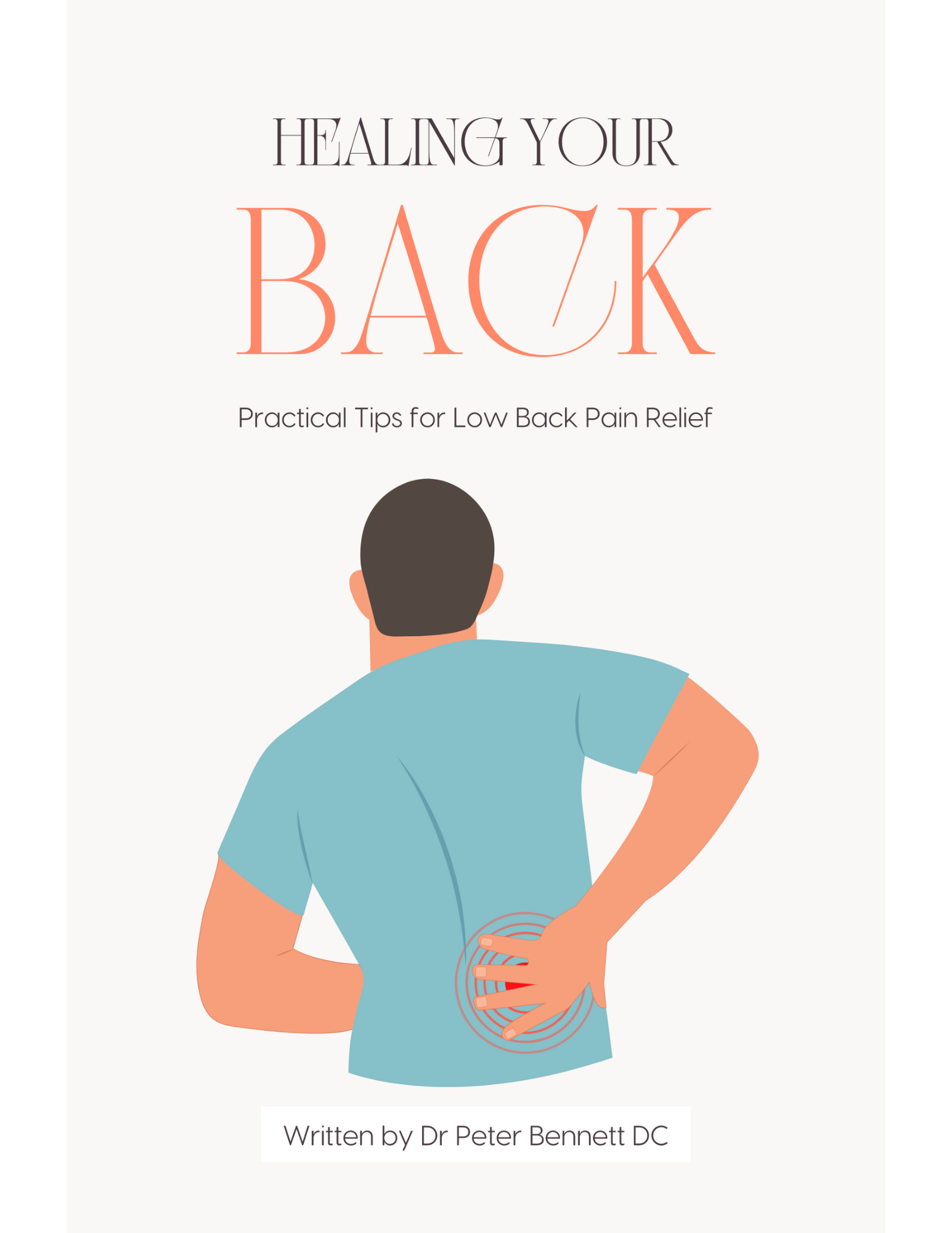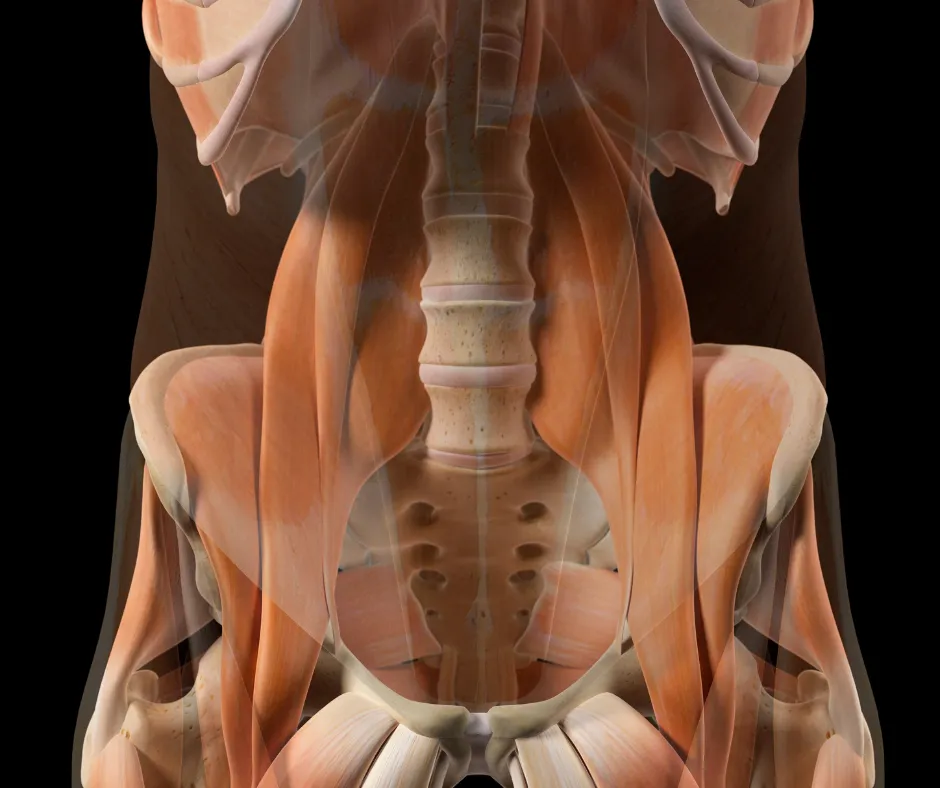5 Poets Walk, Penrith CA11 7HJ
01768 899 036
MONDAY TO THURSDAY: 9:00am - 6:30pm.
Still Living with Back Pain in Cumbria? Start Healing Naturally Today.
If you're over 40 and your back pain hasn’t gone away in 6 months or more, you’re not alone — and it’s not your fault. You can feel better, naturally, with gentle care that supports your spine, your nervous system, and your life.
Over 20 Years Helping Cumbria Move Freely Again
Gentle, Natural Care — No Cracking or Pushing
Proven Help for Back Pain That Won’t Go Away
Download Your Free Copy of Healing Your Back Naturally
Back Pain That Lasts Is a Signal — Not a Life Sentence.
Chronic back pain is incredibly common in people over 40 — especially here in Cumbria, where life can be active, physical, and demanding. Most people have been told to stretch more, take painkillers, or “learn to live with it.” But that’s not real help.
Your body is trying to heal — it just needs the right support. My name’s Peter Bennett, and I’ve helped thousands of people across Cumbria reduce or completely recover from persistent back pain using natural, gentle chiropractic care.
🎁 Get My Amazon-Published Book Healing Your Back Naturally — Free Today
Healing Your Back Naturally
Everything I’ve learned in over 20 years helping people like you… is now yours, free.

Inside this easy-to-read, practical guide, you’ll discover:
Why chronic back pain happens — and why it sticks around
How your spine and nervous system work together to heal
What most people get wrong (and how to break the cycle)
What you can do at home, starting today
But
WHAT IF
“I’ve tried everything.”
✔ You’ve treated symptoms. I help you correct the cause.
“I’m too old.”
✔ Age makes healing slower — not impossible. I help people in their 60s, 70s, even 80s move freely again.
“I don’t want to be cracked.”
✔ No cracking here. My approach is calm, gentle, and effective — even if you’re nervous or sensitive.
Why Gentle Chiropractic Works — Even After Months (or Years) of Pain
Your spine protects your nervous system — and your nervous system controls everything. When spinal movement is restricted or misaligned, it affects how your body heals, how it moves, and how it feels.
By restoring clear communication between your brain and body, gentle chiropractic helps:
Free up stiff joints and trapped nerves
Improve posture and movement
Calm the pain signals that won’t turn off
Support lasting healing — not just quick fixes
Your First Step Could Be the Easiest One Yet.
Download your free copy of Healing Your Back Naturally — and discover what’s really keeping you in pain.
STILL NOT SURE?
Frequently Asked Questions
Why does my back still hurt after all this time?
Because the root cause hasn’t been addressed. The nervous system can stay “stuck” in pain mode — and needs support to reset.
Is it safe for people in their 50s, 60s or 70s?
Absolutely. My approach is gentle, and designed with your age, health and comfort in mind. I've safely looked after clients in theuir 90s
Do you treat people from my town?
I see clients from Carlisle, Penrith, Kendal, Keswick and the whole of Cumbria.
How do I book?
Use the button below to see available appointments online.
Natural Back Pain Relief, Right Here in Cumbria
Whether you’re in town or out in the hills, you shouldn’t have to travel far — or wait months — for real help. I’m proud to serve the people of Cumbria with care that’s local, natural, and trusted.
Carlisle, Penrith, Kendal, Keswick, Eden Valley, Westmorland, South Lakes
Take the First Step — It Could Change Everything
If I can't help you I'll tell you straight away - no messing about

👋 ABOUT PETER BENNETT

Peter Bennett
Hi, I’m Peter Bennett — Chiropractor in Cumbria for Over 20 Years
I specialise in helping people get back to living their lives — without back pain ruling their days. I believe in working with the body, not against it. That means no heavy manipulation, no “cracks,” and no one-size-fits-all treatments.
Just calm, natural help from someone who listens and supports your recovery.
Learn More

The Effects of Sitting on Hip Muscles and How It Leads to Back Weakness and Pain
The Effects of Sitting on Hip Muscles and How It Leads to Back Weakness and Pain
Sitting for long hours has become the norm in today's lifestyle, whether it's at work, during a long commute, or relaxing at home. However, what many people don’t realise is that prolonged sitting has a profound impact on the muscles around the hips, leading to back weakness and pain. Over time, this sedentary behaviour creates muscular imbalances that can disrupt posture, movement patterns, and overall health.
In this article, we’ll explore how sitting affects the hip muscles, the concept of reciprocal inhibition, and how activating the glutes can help release tight hips and alleviate back pain.
Outline:
Introduction
How Sitting Affects Hip Muscles
The problem with prolonged sitting
Muscle imbalances caused by sitting
Understanding Reciprocal Inhibition
How Weak Hips Lead to Back Pain
The kinetic chain connection
The role of the glutes in spinal support
Signs and Symptoms of Weak Hip Muscles
The Importance of Glute Activation
Exercises to Strengthen Glutes and Release Hips
Glute bridges
Hip thrusts
Dynamic stretches
Postural Changes to Prevent Pain
Conclusion
FAQs
How Sitting Affects Hip Muscles
The Problem with Prolonged Sitting
Sitting for extended periods causes the hip flexor muscles, primarily the iliopsoas, to become tight and overactive. This tightness results in a forward pull on the pelvis, creating an anterior pelvic tilt, which places excessive strain on the lower back.
Additionally, because the hips remain in a shortened position for too long, the glute muscles, which are responsible for hip extension, become weak and inactive—a condition often referred to as gluteal amnesia.
Muscle Imbalances Caused by Sitting
Sitting-induced muscle imbalances lead to:
Tight hip flexors – The iliopsoas shortens, pulling the pelvis forward.
Weak glutes – The gluteus maximus becomes underused, leading to instability.
Lower back compensation – The lumbar spine takes on unnecessary stress, leading to pain.
Understanding Reciprocal Inhibition
Reciprocal inhibition is a fundamental neuromuscular concept that describes how muscles on one side of a joint relax when the muscles on the opposite side contract.
For instance, when the hip flexors are tight and overactive due to excessive sitting, the glutes (which are antagonists to the hip flexors) become inhibited and weak. This means that without intentional activation of the glutes, the hip flexors will remain tight, perpetuating the cycle of pain and weakness.
In simple terms, if you don't activate your glutes, your hips stay tight, and your lower back suffers the consequences.
How Weak Hips Lead to Back Pain
The Kinetic Chain Connection
The body works as a kinetic chain, meaning that when one part is affected, the entire system is impacted. Weak glutes and tight hip flexors force the lower back to take on more responsibility than it should, leading to pain and dysfunction.
The Role of the Glutes in Spinal Support
The glutes play a critical role in maintaining pelvic alignment and spinal stability. Strong glutes help:
Reduce lumbar stress by supporting the pelvis
Prevent excessive anterior pelvic tilt
Maintain proper posture during movement
Signs and Symptoms of Weak Hip Muscles
If you've been sitting too much and have weak hip muscles, you may experience:
Lower back pain – Due to increased stress on the lumbar spine
Tightness in the hips – Making it difficult to stand upright
Poor posture – Leading to a slouched or anterior-tilted position
Difficulty in movements – Such as squatting or running
The Importance of Glute Activation
To break the cycle of pain and weakness, it’s essential to activate and strengthen the glutes. Strong glutes can help:
Counteract tight hip flexors
Improve pelvic alignment
Support lower back function
Enhance movement efficiency
Exercises to Strengthen Glutes and Release Hips
Here are some powerful exercises to strengthen the glutes and release the hips:
1. Glute Bridges
How to do it:
Lie on your back with knees bent and feet hip-width apart.
Squeeze your glutes and lift your hips towards the ceiling.
Hold for 2 seconds and lower back down.
Benefits: Activates the glutes while stretching the hip flexors.
2. Hip Thrusts
How to do it:
Sit against a bench with your upper back resting on it.
Place a weight on your hips and thrust them upwards.
Lower slowly and repeat.
Benefits: Builds glute strength and improves hip extension.
3. Dynamic Hip Flexor Stretch
How to do it:
Kneel on one knee with the other foot forward.
Push your hips forward gently while squeezing your glutes.
Hold for 30 seconds per side.
Benefits: Opens up tight hip flexors while encouraging glute engagement.
4. Clamshells
How to do it:
Lie on your side with knees bent.
Open your knees apart while keeping your feet together.
Slowly return to the start position.
Benefits: Strengthens the glute medius, improving hip stability.
Postural Changes to Prevent Pain
In addition to exercise, improving daily posture can prevent back pain:
Take breaks from sitting – Stand up and stretch every 30-60 minutes.
Use ergonomic furniture – Ensure your chair and desk promote good posture.
Engage your core – Keep your abdominal muscles slightly engaged while sitting.
Avoid crossing legs – It can contribute to hip imbalances.
Conclusion
The modern lifestyle of prolonged sitting can wreak havoc on your hip muscles, leading to back weakness and pain. However, understanding reciprocal inhibition and actively working to strengthen the glutes can help break the cycle of hip tightness and back discomfort. By incorporating targeted exercises and postural adjustments into your routine, you can restore balance, improve mobility, and prevent future pain.
FAQs
1. How does sitting affect my hip muscles?
Sitting shortens the hip flexors and weakens the glutes, leading to imbalances and pain.
2. What is reciprocal inhibition?
It's a neuromuscular concept where contracting one muscle group leads to the relaxation of its opposing muscle group.
3. Can strengthening my glutes help with back pain?
Yes, stronger glutes support proper pelvic alignment, reducing lower back stress.
4. How often should I do glute activation exercises?
Aim for at least 3-4 times a week for optimal results.
5. Are there other lifestyle changes to prevent back pain?
Yes, maintaining good posture, stretching, and staying active can help prevent back issues.
© 2025 | Privacy Policy
5 Poets Walk, Penrith CA11 7HJ, Cumbria
01768 899 036
Carlisle, Penrith, Kendal, Keswick, Eden Valley, Westmorland, South Lakes
Gentle chiropractic care for chronic back pain in Cumbria


